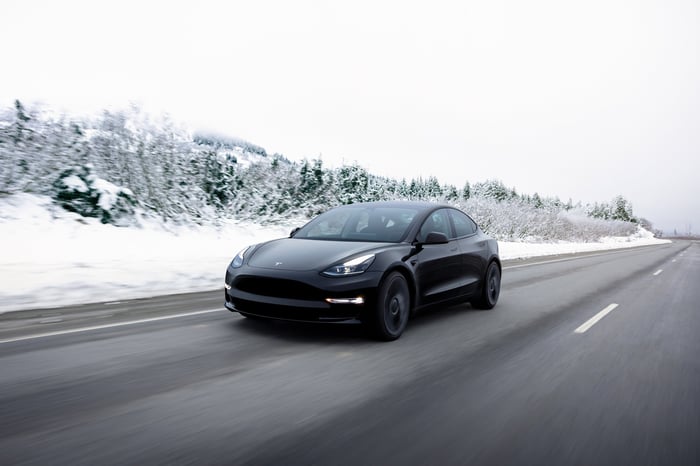Tesla (TSLA 4.96%) became a publicly traded company in June 2010, and back then, electric vehicles were the whole of its business. Given the company has become the largest player in that industry globally, it's safe to say its journey so far has been a wild success.
But Tesla continues to expand into new areas with astronomical potential, which makes its stock tricky to value. Nonetheless, the company is worth substantially more today than it was at its initial public offering (IPO) -- even after accounting for the 62% drop in its share price this year.
Here's how the company got there, and just how much early investors have been rewarded.
The journey to 2 million cars, residential solar power, and... robots?
Despite a tough economy, 2022 has been a landmark year for Tesla. It opened new gigafactories in Texas and Berlin, it delivered its first semi-truck, and it even unveiled plans to sell a humanoid robot called Optimus by 2027.
Back in 2012, Tesla generated $413 million in revenue, and it was producing electric vehicles at an annual rate of 20,000 units. Fast-forward 10 years, and it's on track to generate $83 billion in revenue this year with the capacity to produce cars at an annual rate of about 2 million units.
But the company's potential extends beyond its core business. Its autonomous self-driving technology could transform the mobility industry, which could be a $2.1 trillion opportunity by 2030. Tesla intends to release a robotaxi capable of full self-driving in 2024, which could disrupt both the ride-hailing and traditional taxi industries.
Separately, its residential solar and battery storage products are experiencing soaring demand, with production struggling to keep pace. Tesla deployed a record 2,100 megawatt-hours of storage during the third quarter (ended Sept. 30), which was more than the previous two quarters combined, even with continued supply chain disruptions.
But one of Tesla's most lucrative opportunities could arrive toward the end of this decade. Elon Musk believes the company will be selling millions of its Optimus robots that could reshape industries like manufacturing forever, allowing its business customers to run production around the clock. With an estimated price tag of $20,000, Optimus could be a multibillion-dollar windfall.
Tesla's internal and external challenges are mounting
As instrumental as he's been to Tesla's success, Musk has been somewhat of a wild card this year following his mammoth $44 billion acquisition of social media giant Twitter. It appears to have shifted his focus away from Tesla, which has many stakeholders concerned.
Investors tend to vote with their feet, and although the broader tech sector has been decimated this year, the 62% drop in Tesla stock vastly underperforms the Nasdaq-100 index, which is down just 31%.
Plus, growing competition in the electric vehicle space, combined with declining consumer spending power amid the weak economic environment, appears to be creating a demand problem for Tesla. One estimate suggests the order backlog for its vehicles fell to 190,000 in November, which is down by more than half from its July peak of 476,000.
This is also a function of Tesla's record rate of production at the moment, which is clearing customer orders more quickly. For example, the company manufactured nearly 130,000 more cars in Q3 than it did at the same time last year.
But with economic headwinds like high inflation appearing to ease recently, there's a chance the consumer outlook could improve in the new year. In any case, Tesla's early investors are still sitting on mammoth gains.

Image source: Tesla.
Here's how much a $10,000 investment in Tesla's IPO would be worth now
Tesla hit the public markets in June 2010, priced at $17 per share. That was firmly above its indicated range of $14 to $16, highlighting investors' enthusiasm for the company even in the early days.
Since then, the value of Tesla has soared so high that management elected to split the stock twice, reducing the price per share to ensure it remained accessible to smaller investors. The first split was 5-for-1 in August 2020. The second split was 3-for-1 in August 2022.
Accounting for both of those events, Tesla's $17 IPO price would be adjusted down to $1.13. At the stock's recent price of $150.23, IPO investors would be sitting on a gain of 13,255%.
In dollar terms, an investment of $10,000 would now be worth over $1.32 million.
It means your money would have grown at a compound annual rate of 48%, which is nearly five times higher than the return generated by the benchmark S&P 500 stock market index over the same period.
It's likely the stock will continue to outperform over the next decade (and beyond) given the sheer magnitude of Tesla's opportunities, so investors might want to buy now and take advantage of this year's 62% drop.





